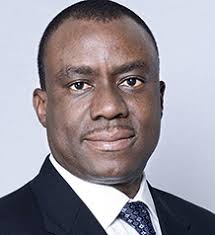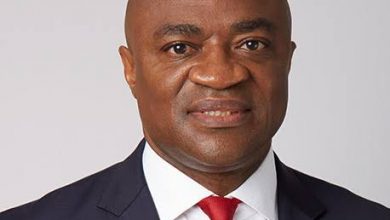Stanbic IBTC: Sustaining the SUV Model

It appears that Stanbic’s strategy of Scale (expanding across its markets), User Experience (enhancing customer interactions), and Velocity (accelerating transaction volumes across its channels), dubbed SUV, has continued to aid the bank in navigating a challenging terrain marked by policy changes, intense competition, regulatory uncertainty, and rapid technological advancements
After facing its first profit-before-tax decline in five years in 2021, Stanbic IBTC rebounded in 2022 and has remained resilient with impressive growth in both the top line and bottom line.
The financial results for the 2022 fiscal year underscored the bank’s rebound, with a 39.3% year-on-year growth in gross earnings, reaching N287.871 billion.
This growth extended to the bottom line, as evidenced by a 42% year-on-year increase in profit after tax, reaching N81 billion. Earnings per share surged by an impressive 44.05% year-on-year, reaching N6.05.
The result marked a turnaround from its 2021 FY results, which saw earnings decline by 32%, the first drop in about five years.
In 2023, the positive trend persisted as evident in the group’s nine months of unaudited results, showcasing an impressive bottom-line performance.
Dr. Demola Sogunle, Chief Executive of Stanbic IBTC, provided insights into the results, stating,
- “The Group’s profitability increased by 9% QoQ. The major driver was the 32% growth in the net interest income quarter-on-quarter. Continuous focus on cost optimization led to a 5% QoQ reduction in operating expenses. Hence, our cost-to-income ratio improved from 56.1% to 46.87% in the third quarter of 2023.”
Furthermore, a cursory review of the financial statements highlights another critical success factor contributing to the outstanding bottom-line performance – non-interest income. This income line surged by 50.39% to reach N141.96 billion.
News continues after this ad
https://prime.nairametrics.com/mid-banner This holds significant importance, especially considering that some banks achieved impressive bottom-line performance, buoyed by gains from foreign exchange (FX) revaluation during the reviewed period
In contrast, Stanbic IBTC, operating as a holding company for an extended period, stands out with well-established corporate banking, thriving wealth management operations, and a burgeoning retail franchise.
This diversified business model ensures that income is derived from multiple banking segments. For instance, within the N141.961 billion non-interest income recorded in the first nine months, asset management fees accounted for a substantial portion, specifically N52.398 billion, representing approximately 37% of the total non-interest income.
The bank’s management will likely be pleased to have successfully maintained the return to profitability growth in the first nine months of 2023. This satisfaction is heightened by the fact that the 9M profit has exceeded the full-year 2022 figure, marking the highest recorded in the last five years.
For shareholders, this denotes the continuation of a successful strategy and a reassuring confirmation of the ability to consistently generate profits across all business segments.
Stanbic IBTC is one of the pioneers of the HoldCo model, a trend that many banks are currently embracing.
Additionally, for shareholders and investors, the impressive profitability figures may increase the possibility of an increase in dividend payouts, given the bank’s track record of consistent dividend payments and that may boost investor confidence.
Preceding the release of the Q3 results, Stanbic’s market capitalization reached an impressive N1.011 trillion, reflecting a Year-to-Date share price gain of 133% as of September 30, 2023.
Following that, the market capitalization has declined to N802.982 billion. However, its Year-to-Date gain of 85.50%, coupled with a dividend yield of 5.64%, surpassing the broad market ASI Year-to-Date return of 39.09% and the inflation rate, reaffirms the stock’s strong standing in the market.
Certainly, an increase in final dividends for the 2023 financial year can indeed have a positive influence on the share price. The bank has kicked off the year on a positive note by maintaining its dividend payout trend, declaring an interim dividend of N1.50 for H1 2023.
Impressively, the bank has upheld a steady dividend payout for the past five years, with a Compound Annual Growth Rate (CAGR) of 12.11%.
In the 2022 financial year, it declared and distributed a dividend of N3.5 per share, leading to a payout ratio of 56.12%. With the 9M profits surpassing the 2022 full-year figures by 35% and, at a minimum, sustaining last year’s payout ratio, shareholders anticipate higher dividends.
The market’s expectations of this sustained growth are evident, as reflected in its earnings multiples. The share price is trading at 7.71x its trailing 12-month earnings per share, exceeding the NGX banking sector average price-to-earnings ratio of 4.8x and ranking among the highest in the sector.
This suggests that investors still foresee growth from the already impressive 9M N8.05 earnings per share (EPS) and are currently willing to invest at a premium.
Certainly, the responsibility now lies with the bank to meet these expectations. The bank has clarified its unwavering commitment to advancing key metrics throughout the remainder of the year and attaining its FY 2023 guidance and strategic intent.
As highlighted in its H1 2023 results presentation, the Group’s strategic intent is to:
- “Be within the top 5 in market share, ROE and service across our major client segments – Consumer and High Net Worth, Business and Commercial Clients; and CIB clients by 2025”
However, achieving this goal requires the ongoing sustenance of models that will continually improve both revenue growth and cost efficiency.
Reportedly, one of the reasons for the bank’s profit decline in 2021 was the challenge of adapting to models that would drive efficiency and resilience in managing expense lines. During that period, expenses increased significantly, putting pressure on profits.
However, it appears that the bank has learned from this experience, as evidenced by the continuous decline in the cost-to-income ratio. This ratio has decreased from 53.9% in the 2022 fiscal year to 48.1% in H1 2023 and further down to 46.87% in Q3 2023.
This, coupled with other factors, may have contributed to the impressive bottom-line performance and the growth in return on average equity, from 14.7% in 2021 to an impressive 32.5% as of the end of Q3 2023, outpacing its 2023 revised guidance of 25% – 30%.
The sustained success observed in Stanbic IBTC’s financial journey underscores the crucial importance of the bank continuing to uphold and fortify the triumph gained through the SUV model. COPIED FRON NAIRAMETRIC




